Don’t have a roof or gutters you can use to catch rainwater?
Don’t worry.
Here are six ways to collect rainwater, including with a tarp rain catcher, umbrella rain catcher, and other survival rain catchers.
What You Need
All rainwater harvesting systems use the same parts. This is true even if you aren’t using your roof and gutters or are making an emergency survival rainwater catcher. These parts include:
- Catchment surface: The bigger the catchment areas, the more water you can catch.
- Conveyance system: Without gutters, you will use a “drip conveyance system” where the water drips or flows directly into the container.
- Containers: These can be rain barrels, tanks, buckets, ponds, etc. If you won’t use the rainwater immediately, you’ll want a closed container to prevent pests from entering and to prevent evaporation.
- Way to access the water: If your container doesn’t have a spigot, you’ll need another way to drain the water out.
6 Sustainable Ways to Collect Rainwater
These DIY methods are simple, practical and good for the environment.
1. Tarp
A tarp is great for catching rainwater because it is lightweight, comes in many sizes, and can be easily set up.
The key is setting up the tarp so all the rain drips to the same point.
One option is to make a hole in the middle of the tarp (as shown in the first photo). Alternatively, rig the tarp to angle downwards (second and third photos).
If you were in a survival situation and didn’t have a tarp, you could use a poncho or trash bags to collect rainwater.
However, it’s wise to keep a tarp in your bug out bag: it can be used for catching rain and also makes a great survival shelter.
Tip: Put a stick or heavy object on the tarp to angle it towards your buckets or barrels.
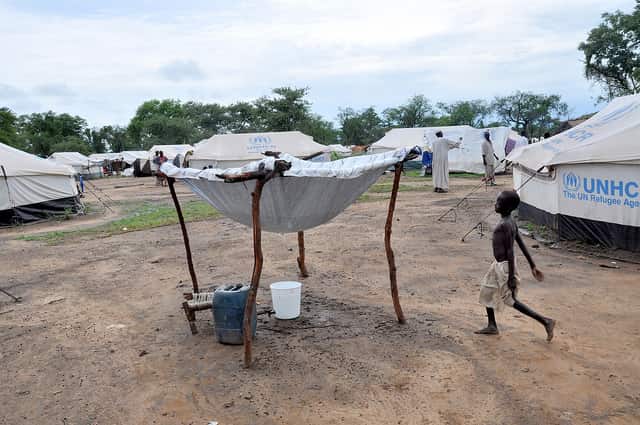
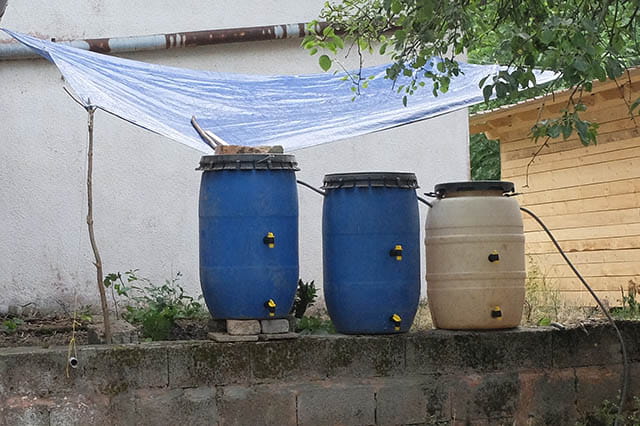
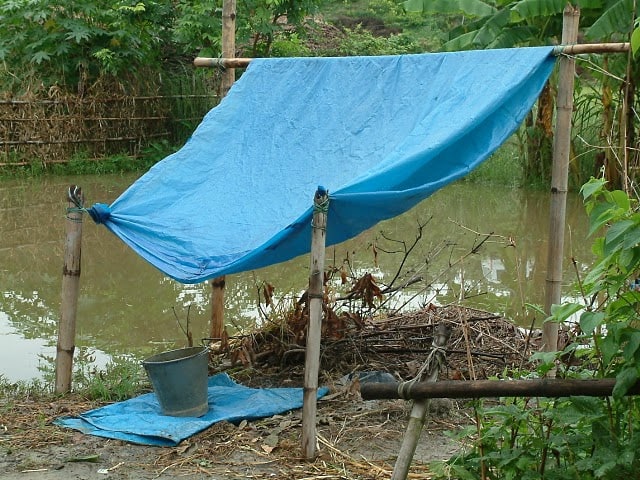
How Much Rain Can You Catch with a Tarp?
A 9×9-foot tarp will catch approximately 36 gallons of water during a typical rainfall, while a 10×12-foot tarp will catch about 54 gallons. However, these amounts can vary depending on how the system is set up, the intensity of the rain, and its duration.
See our rainwater harvesting calculator to get a more accurate estimate.
2. Butterfly Structure
This type of rainwater catcher is sometimes called a “butterfly” system because its two sides are angled upwards like wings. The water hits the wings and flows towards the center, dripping into a collection device.
The image below shows a beautiful butterfly-type rainwater catcher. These could also be made out of simpler materials, such as plywood, so long as the midline is sealed by covering the structure with plastic trash bags.
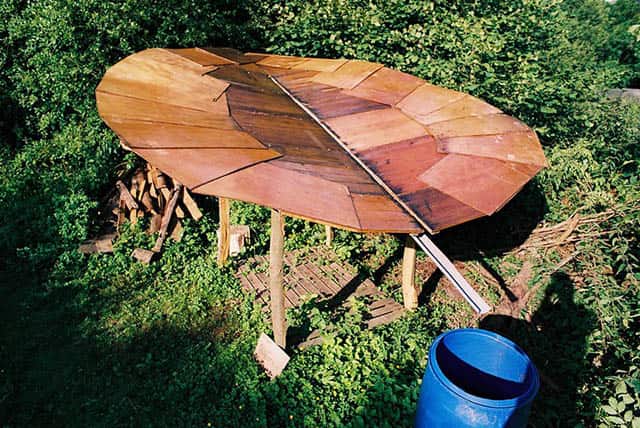
3. Umbrella
Also called “saucer rainwater catchers,” umbrella rainwater catchers are upside-down umbrellas with a hole and conveyance tube in the middle. Some companies sell these, but it’s pretty simple to make one, too.
Remember that these must be securely anchored as they easily fall over in the wind.
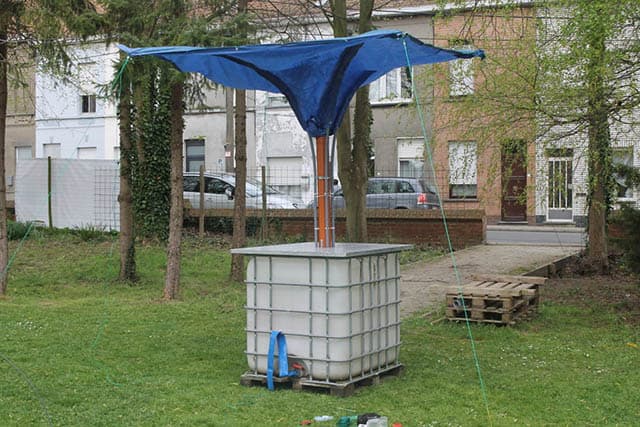
4. Catch Rainwater from the Ground
You can utilize the ground to catch rainwater. This was common throughout history as a way of catching runoff for livestock. You’ll need to construct a slanted surface on the ground to do it. The surface slope must divert rainwater into a container, like a pond.
The images below show examples of these rainwater catchment systems, likely from the 5th to 8th centuries.
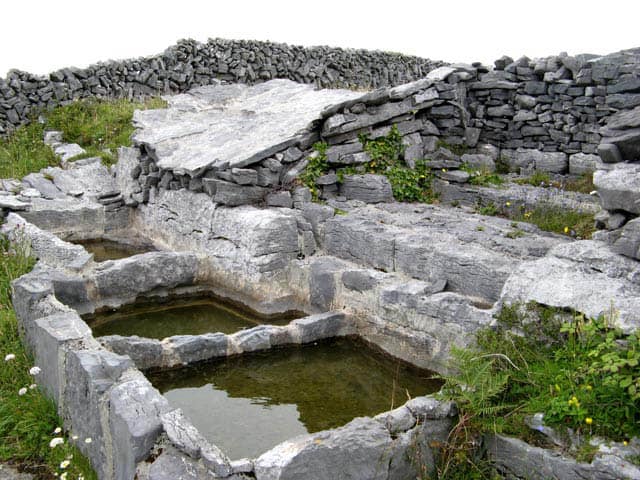
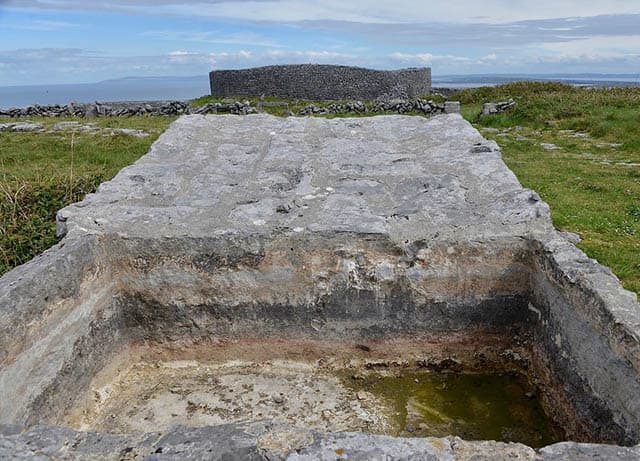
5. Rain Ponds
A simple way to catch runoff is to dig a pit, line it with plastic, and allow the rain to accumulate.
These rain catchers aren’t usually recommended because lots of water is lost to evaporation, and the stagnant water gets dirty quickly.
Building a pond on your property without a permit is also illegal in some places. In many areas though, rainwater ponds are a primary source of water.
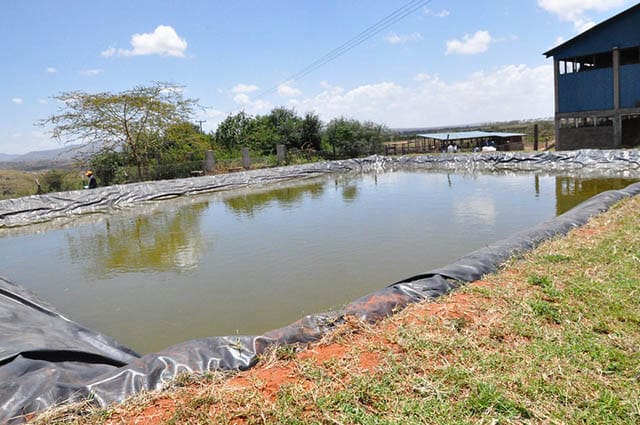
6. Buckets and Basins
You could put buckets and other containers outside or in your yard to collect rainwater as a last resort.
However, because the surface area of a bucket is very small, you won’t catch much water. You’ll drastically increase the amount of water you can catch by using a tarp, plastic bag, wooden boards, or any other surface to funnel the water into your buckets.
Propagating rain water harvesting in North Bihar (Phase II) by indiawaterportal.org (CC BY-NC-SA 2.0) Found on Flickr.
Harvesting rainwater by Oxfam East Africa (CC BY-NC-SA 2.0) Found on Flickr.
Rain barrel system by Chiot’s Run (CC BY-NC-SA 2.0) Found on Flickr.Rainwater collector – geograph.org.uk – 1470877.jpg, by Jonathan Wilkins, Creative Commons Attribution-Share Alike 2.0 Generic license.
“Rain water harvested in a pond in Machak” (CC BY-NC-SA 2.0) by World Agroforestry
“Dún Eochla” (CC BY-NC 2.0) by kewing
“‘ Elf Shelter’ Rainwater Collector” (CC BY-NC-ND 2.0) by drewwith
ElizabethGoetvinck. CC BY NC SA 4.0 License.



Bird Droppings Definitely can be harmful.
keebler.
While collecting runoff from a roof sounds like a no-brainer, I’ve seen a lot of information as to the dangers of doing so for drinking/sanitation purposes due to the asphalt chemicals that can be leached into the water supply along with the shingle “sand” that also collects from the shingles. Most filters I’m aware of and even some purifiers don’t remove chemicals from the water without specific chemical filters to do so. I suppose water collected from this source could be used for other purposes such as watering a garden or therwise, but wouldn’t that just be putting those chemicals into the garden as well?
I would appreciate your thoughts on this since I’m considering acquiring rain barrels as a collection method.
Are there any types of these systems that are more modern to use where a valley on a roof has a run off? I was looking for something that may be a smaller version that can be closer to the valley and to make a more contour flow of water to go into a rain barrel. I have no way to put a gutter on the valley. A rain barrel is the only way I can see to capture the water and to keep if from eroding the area on the ground. Thanks for any advise.
The best thing would be to install a gutter for that valley – there definitely has to be a way to get a valley gutter there.